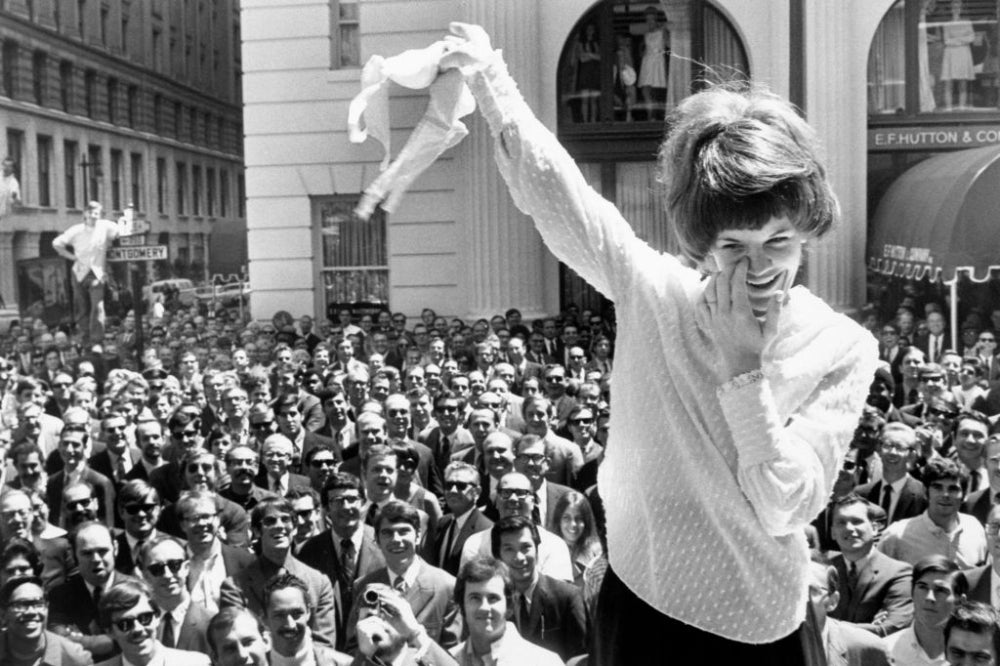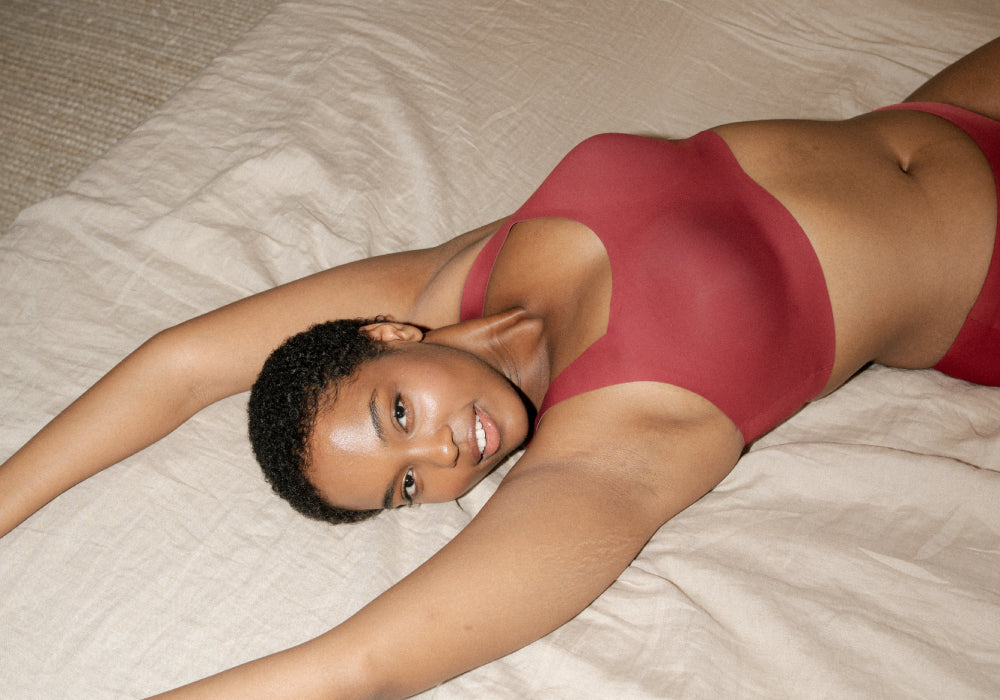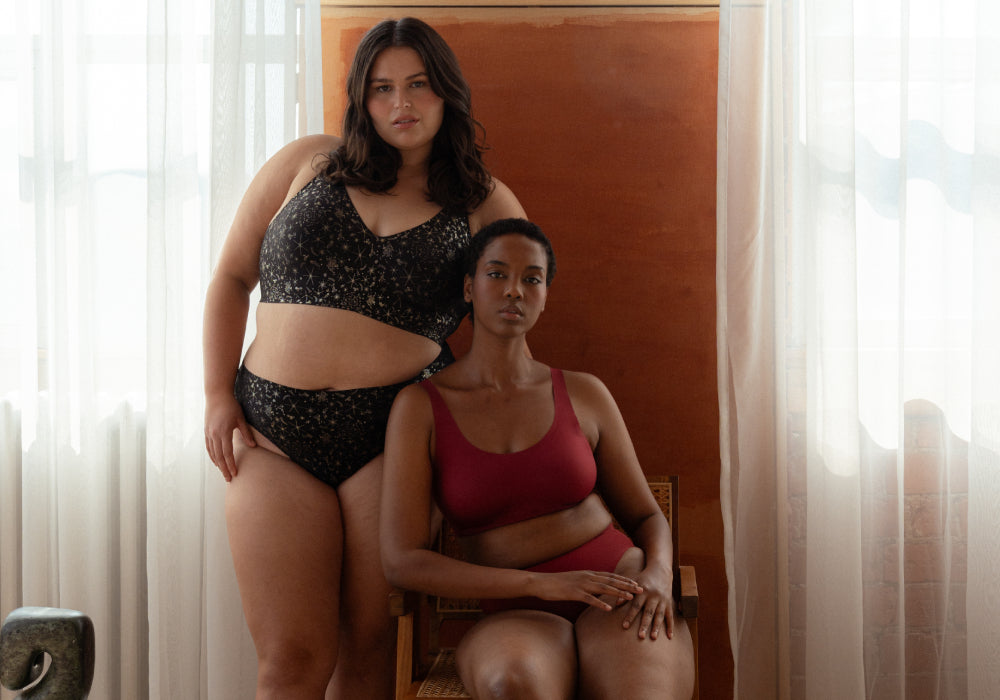Toss Your Underwire Bras and Join the Wireless Revolution
In all our years as card carrying feminists, we’ve never been invited to a single bra-burning party. It’s disappointing, really.
Aside from the fact that it sounds kind of fun, for all the times we’ve been poked and prodded by an underwire, there are a few bras we wouldn’t mind seeing go up in flames.
Radical and bad-ass as it may sound, the whole bra-burning feminist thing is largely a myth — one that was concocted by sensationalist media outlets of eras past, looking for grabby headlines and to undermine the second wave feminist movement.
It’s a legend that rewinds us back to the 1968 Miss America Pageant, where the Women’s Liberation Movement rallied to disrupt the narrow representations of female beauty and womanhood being put on display at the televised beauty pageant.
The iconic demonstration featured a “Freedom Trash Can,” where women were invited to toss anything they viewed as symbolic tools of patriarchal oppression. As women stepped into their power, tubes of lipstick, women’s magazines, mops, and heels were hurled into the trash can by the dozen.
Then, fatefully, some women unhooked their bras and slinged them into the trash, freeing their breasts from the constraints of their underwire shackles. The only kind of burning that took place, however, was purely symbolic.
Against the backdrop of the feminist revolution, bras — with their metal wires and restrictive fabric — were increasingly seen as an oppressive garment. But, today, have we fully escaped the grips of the cone-bra, metal corset, and its latest iteration: the underwire bra?
With the advent of bras made by women for women, with the aim of being comfortable and not (necessarily) for the purposes of stoking male desire, we’d say there are some pretty revolutionary bras out there today (read: our lineup of aptly named Revolution Bras).
The underwire bra has been deemed passé and the female gaze (and wireless bra) has stepped onto the scene — but the story of how we got here warrants more exploration.
For one, bras have been around for a long long time. Garments used to hold up breasts have existed for basically as long as, well, breasts.
Within the mosaics of a Sicilian castle that dates back to 4th century AD are depictions of women wearing supportive fabric while engaging in sport.
But there’s a pretty wide gap between those makeshift garments and the modern, double cup, adjustable bra we know today.
Notoriously rigid, restraining, and made from bone, ivory, and metal, corsets aimed to mold women’s bodies and emphasize a narrow waist.
The corset reigned from the 16th century until 1889, when feminist Herminie Cadolle had the ingenious idea of cutting the undergarment in half for more freedom of movement — she coined it the “corselet-gorge.”
In 1913, the modern bra made its first appearance when Mary Phelps Jacobs DIY-ed a piece of lingerie out of two silk handkerchiefs and some ribbon. Inspired to fashion it when her corset kept peeking out from her plunging neckline, she sold them to women in her community before selling the patent to Warner Brothers Corset Company for $1500.
We can’t help but roll our eyes knowing the company went on to garner over $15 million in sales from the bra over the next few decades.
By the time cup sizes and hook-and-eye fastenings came around, it was the 1930s. With metal being in high demand during wartime, the corset fell into oblivion while bras crafted for the male gaze gained ascendence.
Popularized by stars like Marilyn Monroe and Jayne Mansfield during the Hollywood golden age, the bullet bra — with its cylindrical padding — made an impact on the evolving feminine ideal.
Padded, and even inflatable bras were all the rage as full busts and cinched waists infiltrated everything from Christian Dior runways to movie screens.
It’s no wonder by the time the 1960s came around, women were ready to throw in the towel (or throw the bra into the trash can, as the story goes).

As women connected and rallied over their shared oppression (which, notably at this time lacked intersectionality) the bra became one of the many targets of pushing back against enforced femininity.
Changing notions of gender and sexuality, inspired by the second wave feminist revolution, gave way to more organic shapes and functional fabrics. Women everywhere let out a giant sigh of relief.
Unfortunately, the reprieve was short-lived. Having abandoned centuries of restrictive, male-focused undergarments, the 90s and early-2000s marked a resurgence in performative sexiness.
The same logic that was used to sell corsets and bullet bras to housewives in the 1950s was at work again, this time in the form of the underwire push-up bra. Designed to constrict and contort, lingerie was sold to women under the guise of self-empowerment.
Rooted in male fantasy and pleasure, angel wings, slender frames, and seriously uncomfortable bras dominated the decades.
While the bra seems to be here to stay, we’ve mostly stepped out of the dark ages of bras as symbols of female torture and into the golden days of comfortable, functional, and wireless bras — ones that women have designed themselves, based on their own needs and desires.
As women stake a claim on their sexuality, undergarments are less focused on seduction and increasingly prioritize how women want to look and feel.
We don’t have to live between the dichotomy of “sexy” or “practical” — our undergarments can reflect our mood, personal taste, and style.
Still, we can’t help but want to reclaim the image of the bra-burning feminist. It’s an enduring persona that was devised to trivialize the feminist movement, and it’s due for a rebrand.
We’re all for the Revolution Bras of today that provide barely-there comfort and support, and ready to set our underwires ablaze — if only metaphorically.
As feminist and journalist Lindsy Van Gelder, who’s famed for reporting on the 1968 Miss America Pageant protests once wrote: “I never burned my bra in the sixties, but I wish I had.”











